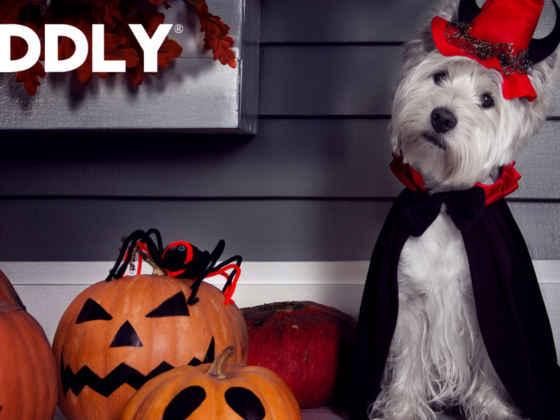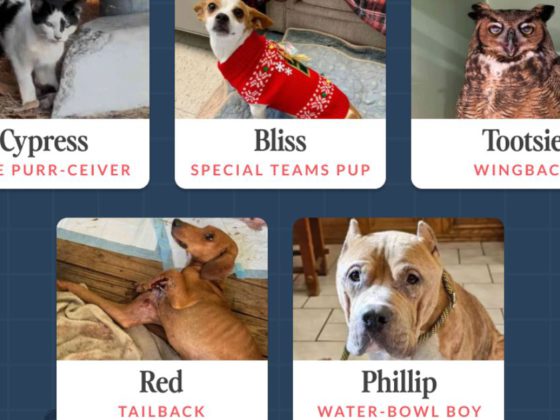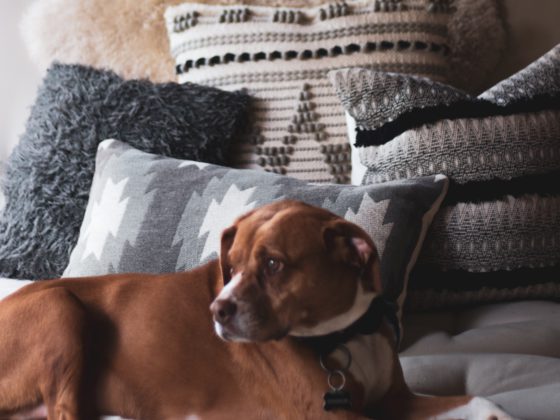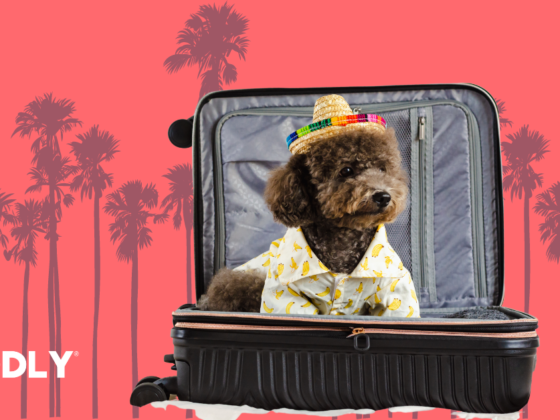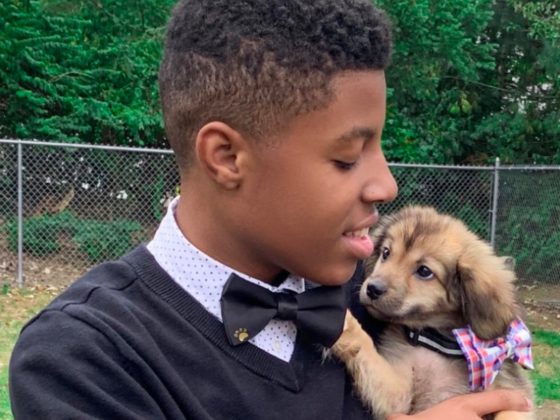Your guide to keeping older dogs active, content, and thriving at any age.
Dogs don’t stay puppies forever. Aging is a natural and beautiful part of life, but it comes with challenges that call for patience and a new approach. With the right care, your pup’s golden years can be the best ones yet.
Here are five ways to help your fuzzy companion thrive as they age.
Schedule Regular Vet Visits
Vets recommend that senior dogs come in for a checkup every six months. These visits allow vets to run bloodwork, examine teeth, and screen for early signs of illness such as kidney disease, arthritis, thyroid issues, or cancer. Detecting problems early often means better treatment options and a longer, more comfortable life.
And don’t forget, you also play a crucial role in monitoring your dog’s health between visits. Watch closely for any changes in appetite, mobility, or bathroom habits. A dog who refuses food, struggles to stand, or suddenly has accidents indoors may be battling pain or disease. Keep a small journal or note on your phone to track these shifts. Your vet will thank you for the attention to detail.
Consider Nutrition Upgrades
Just as older humans need different nutrition, senior dogs benefit from a diet designed for aging bodies, such as joint-supporting nutrients. As metabolism slows and digestion weakens, your pup may need high-quality, easily digestible protein to maintain muscle mass in addition to Omega-3 and Omega-6 fatty acids to keep joints lubricated and inflammation low.
Thankfully, CUDDLY Salmon & Rice Dog Food has everything your pup needs to thrive, regardless of age. Easily digestible salmon and rice make this food a great pick = for seniors with sensitive stomachs. And in case you didn’t know, for every bag of food purchased, CUDDLY donates a meal to a shelter pet in need. That means more joyful retirements and happy futures for a dog who needs it most.
Redecorate For Comfort And Safety
Senior dogs deserve a home that feels safe and easy to navigate. Aging often brings arthritis, stiff joints and muscles, or vision loss, making daily movement harder. Simple home adjustments can make a world of difference for your pet’s comfort.
Add ramps or pet stairs so your dog doesn’t have to jump onto furniture or into the car. Lay down rugs or mats to prevent slips on slick floors. Additionally, an orthopedic bed can relieve pressure points and help them rest more comfortably. And remember, temperature control is vital. Senior dogs are more sensitive to both heat and cold.
Beyond home adjustments, gentle exercise is also key to maintaining mobility. Daily walks, even short ones, keep joints flexible and muscles strong. Just remember that overexertion can be painful, so let your dog set the pace. Keeping your senior pup at an ideal weight is one of the best ways to protect their joints and overall health.
Keep A Consistent Routine
Senior dogs find comfort in familiarity. As their senses dull and memory fades, a consistent routine helps them feel secure and reduces anxiety. For example, try to feed and walk at the same time every day. Predictability helps your pup know what to expect, which can ease confusion and restlessness, especially for dogs showing early signs of cognitive decline.
Incorporate mental enrichment into your daily schedule, too. Hide treats around the house, use puzzle feeders, or teach easy new tricks to keep their mind sharp. Even just a few minutes a day can reduce stress and boost confidence.
Cherish Every Moment
Maybe your old pal can’t run or play like they used to, but that doesn’t mean they don’t enjoy your company. Above all, senior pets want your attention and presence. Take a few extra minutes before leaving for work to say goodbye. Let your walks be slower. Cuddle for longer on the couch. These little moments will become the memories that will stay with you forever.
Caring for a senior dog is both an honor and a responsibility. These loyal companions have spent their lives loving us unconditionally. The least we can do is return the favor. With regular vet visits, a thoughtful diet, a safer home environment, predictable routines, and lots of affection, you can make your dog’s final years some of their happiest.


